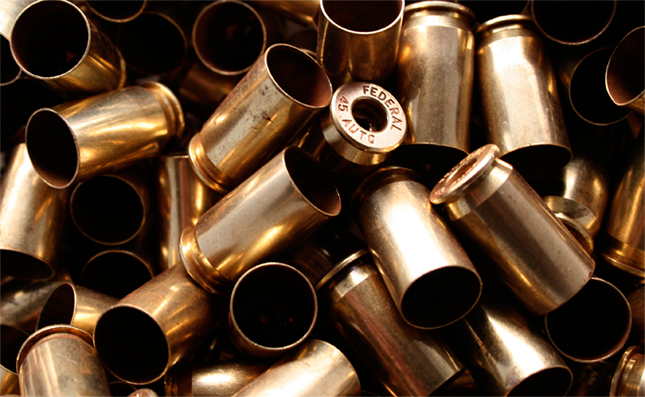Hot On The Case - Figuring Out What Went Wrong by Inspecting Cases
12th Apr 2016

Cases are a critical part to the reloading process: they hold all the other components together and when something goes wrong, they can provide critical clues to finding the issue. For the sake of this discussion, let’s assume you are only handloading with high-quality brass cases, designed to be reloaded and trimmed to the proper length.
Bulges
Bulges in your cases, either before or after firing, can be signs of many different kinds of issues. If your cases have bulges near the neck before firing, it’s often due to crimping of the bullet. If you notice the round is difficult to chamber, don’t fire it; instead remove the round and carefully inspect the case for bulges. Avoid trying to seat the bullet and crimp in one step, as this can make this issue happen more often.
If you notice a very slight bulge near the bottom of the case after firing, this may not necessarily be an issue. In some firearms (especially handguns that don’t have a fully supported chamber) a very small amount of bulging near the bottom of the case is normal.
However, if your chamber is fully supported or the bulge is significant this could be a symptom of the round not getting fully chambered. This can happen If the bullet it set too far out the round, so when it’s fired, the back of the case will bulge. In semi-auto firearms this could even result in the round going off while the gun isn’t fully in battery – which can be dangerous or cause case / head separation.
Another cause of bulges could be from too much powder which results in an overpressured round. Always stay within the recommended parameters for powder and bullet weight, and periodically check to ensure each case is getting the right amount of powder while reloading.
Dents
Another common sign of issues is dents in the case. These dents can either be a minor inconvenience or a major issue depending where on the case the dents appear. Dents in the case mouth can easily be fixed during resizing and are usually not too much of an issue. However, severe case dents in the body can cause a loss in case capacity and can result in dangerous overpressure.
Case mouth dents usually occur in semi-auto rifles with very stout ejection when the case strikes a shell deflector or part of the firearm’s action. The only way to prevent this is to weaken the ejection process somehow or soften the impact on the shell deflector by affixing additional material to it. Since this denting can be normal and fixed easily during resizing, many handloaders don’t worry about it.
Dents that appear in the case shoulder are often caused by excessive lube used during the resizing process. Most resizing dies have small holes to allow excess lubrication to bleed out and prevent this issue, but it can still happen. Lubrication can also build up inside the resizing die over time. To prevent such dents, periodically check your lubrication use. Help prevent this form of denting by cleaning the die and using only a light even coat of lubrication over the entire case.
Sometimes the case body can develop severe dents or even crease and kinks from excessive resizing. When sizing dimensions and chamber dimensions differ too much, the consequence can be the case buckling during the resizing process. To see if you have an issue with size differences, compare a fired case alongside a newly resized one.
Cracks & Splits
Sometimes older cases will crack or develop splits in the neck when they reach the end of their usable life, however if these same issues occur in newer cases, this could indicate other problems. Many times splits in the case neck are caused by grit and debris in the resizing die. Make sure to inspect and clean your dies on a regular basis.
If you are reusing brass, also make sure your tumbler is effectively cleaning the cases, and no cleaning medium or other material is left behind. If there are particles inside the neck of the case, the inside can become scored when bullets are seated, weakening the brass in these spots.
There may also be excess debris within your firearms chamber. As rounds are loaded, the case can become scratched by material in the chamber which will weaken the brass. Some types of semi-auto firearms are also notoriously hard on cases and can crack or even tear them apart during the extraction and ejection process. Fluted chambers and roller-delayed blowback actions are known to make cases unusable after firing.
Tips to Review
To extend the life of your cases and get the most bang for your buck, only start with high quality reloadable cases.
Keep in mind, cases that come factory annealed will hold up better, and you can even reanneal your cases after a few loadings to strengthen the brass.
Keep your reloading equipment and firearm clean and free of any debris. Also, use the proper amount of of case lube and make sure you don’t excessively size your cases.
We hope these tips offer you some insight into what’s happening with your cases. As always, have a safe and enjoyable time shooting!

